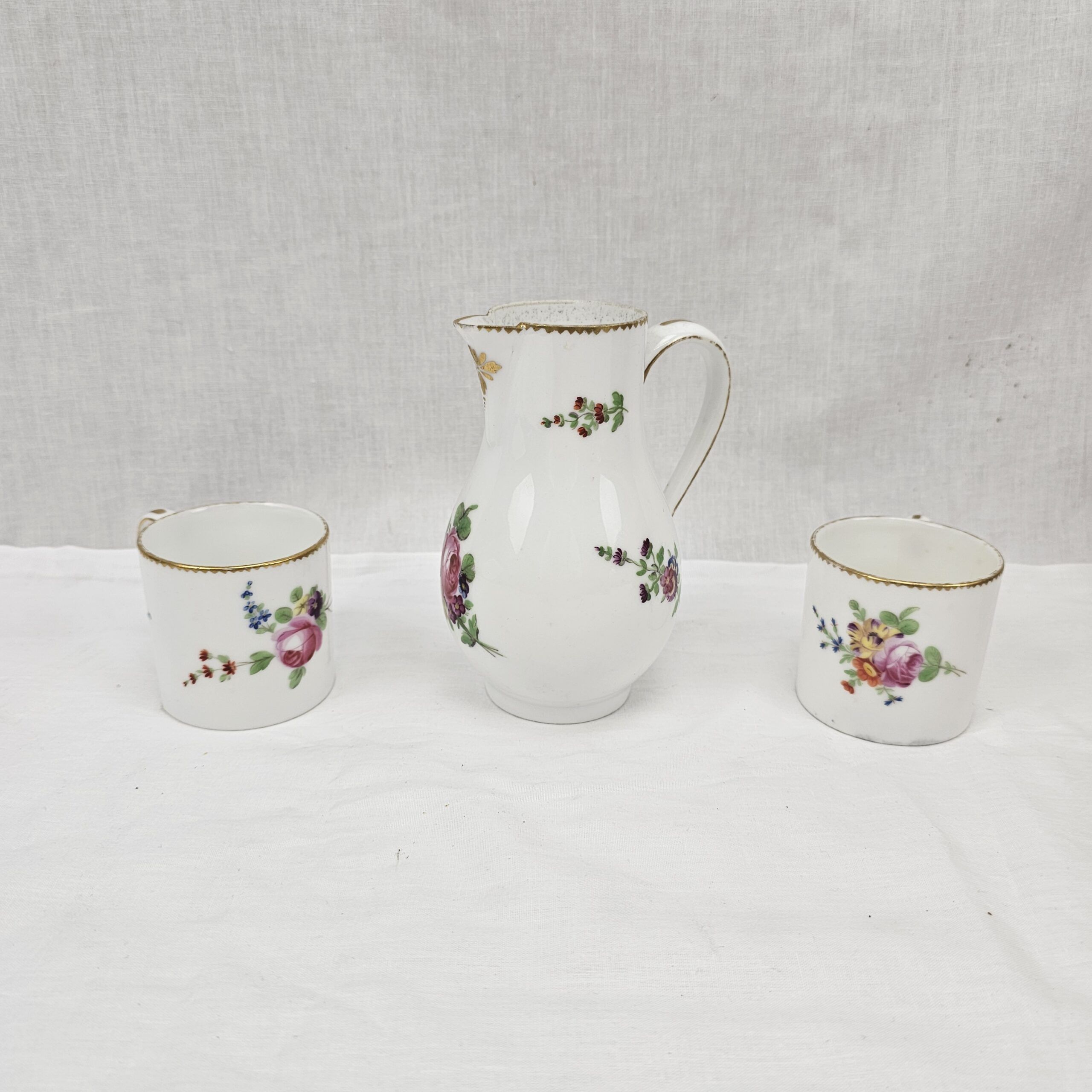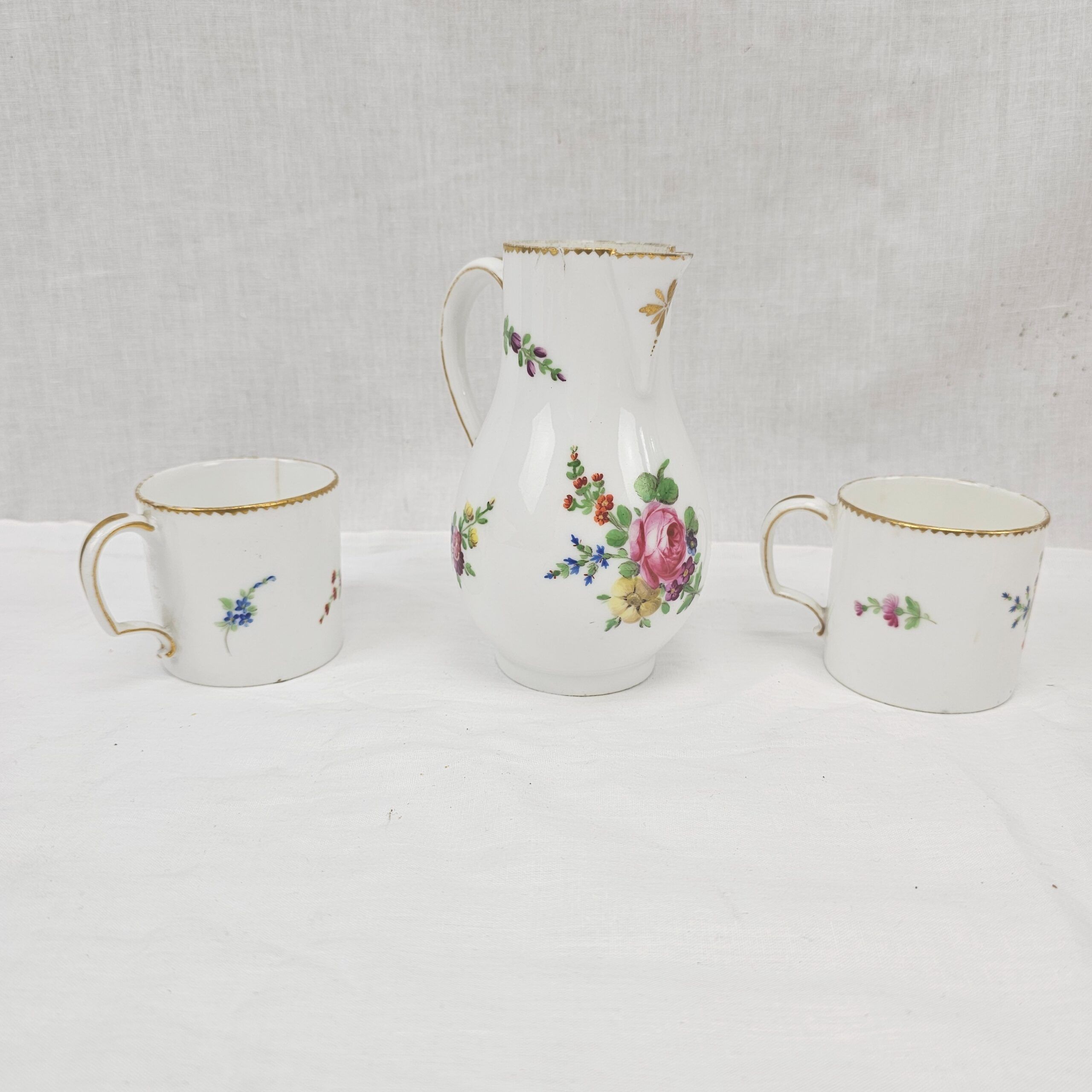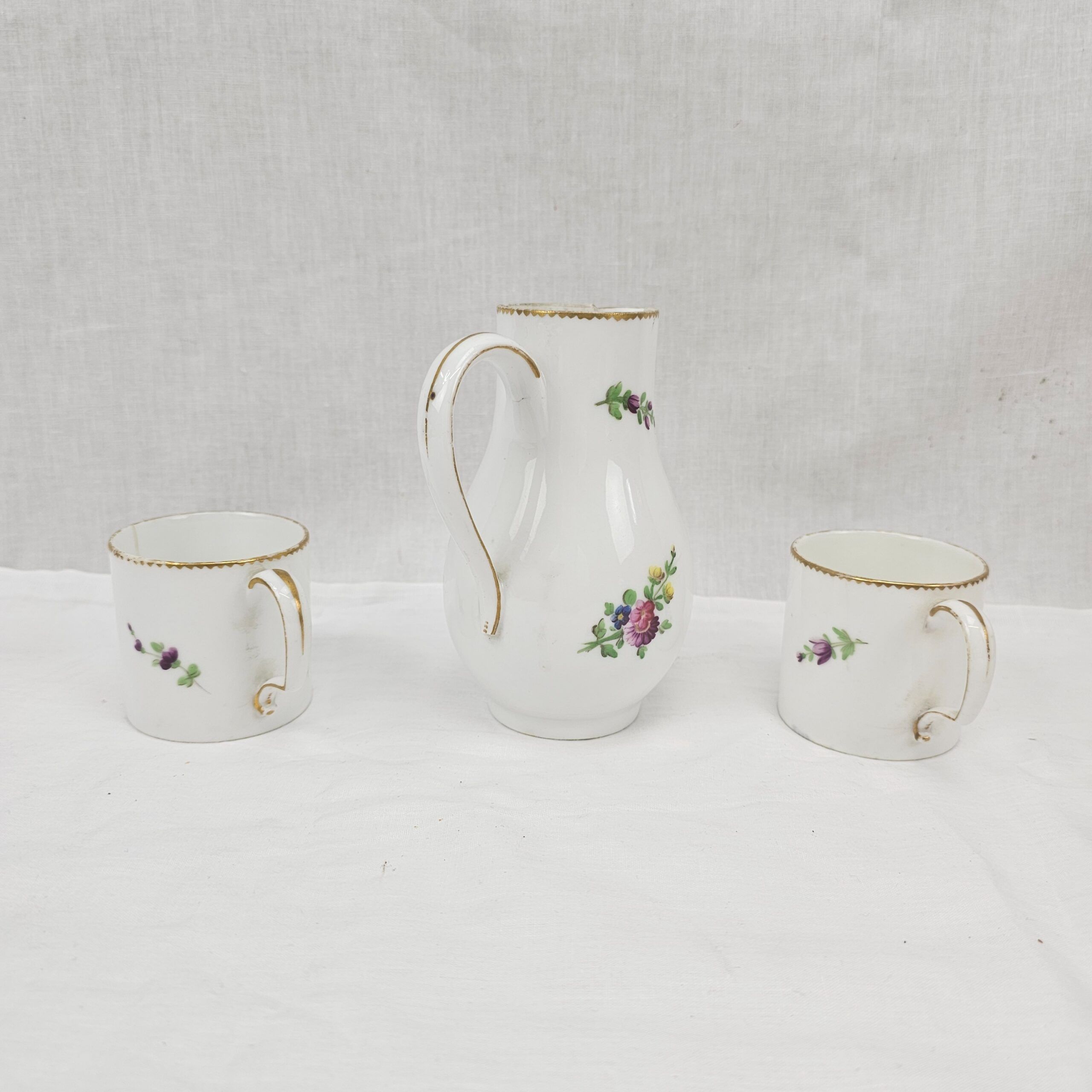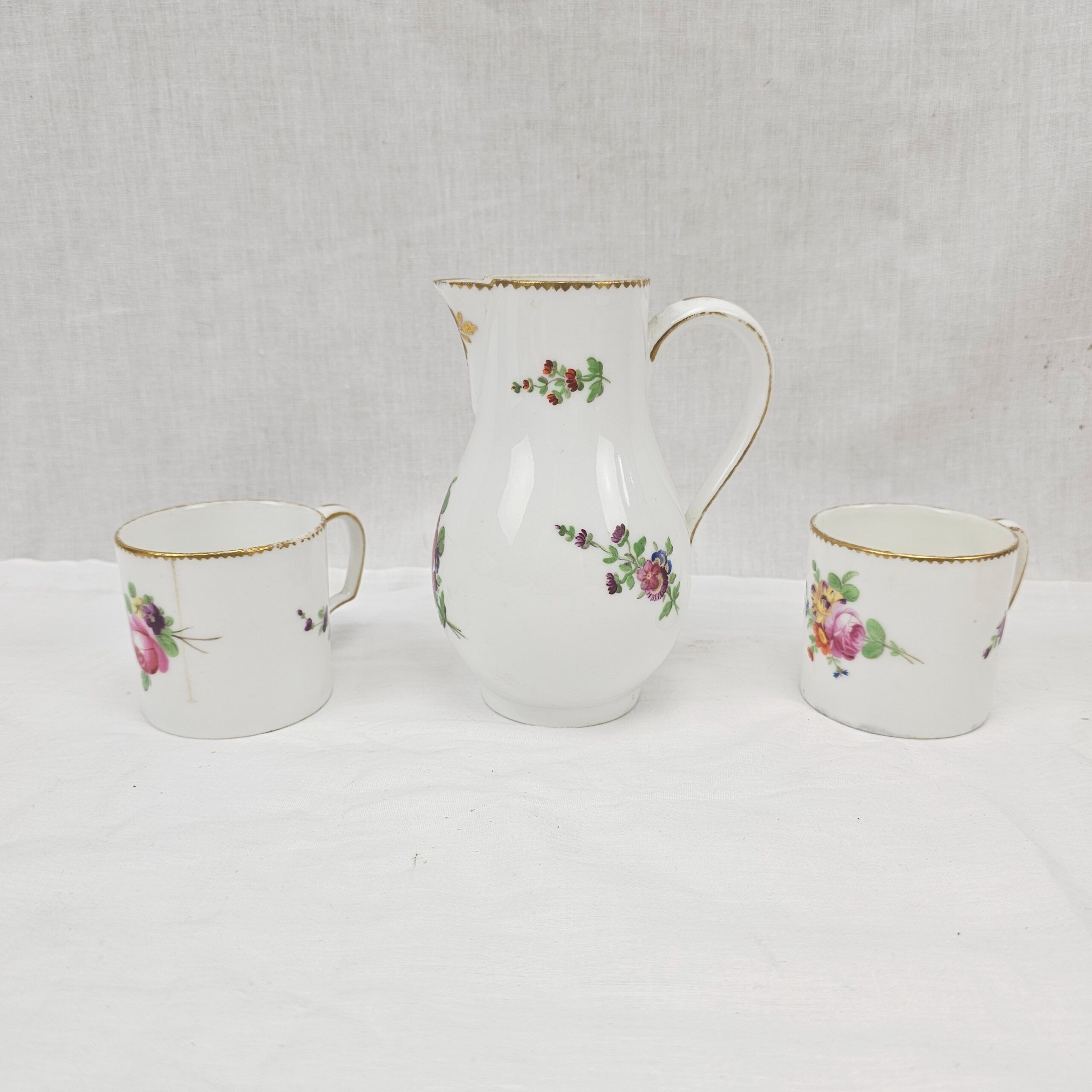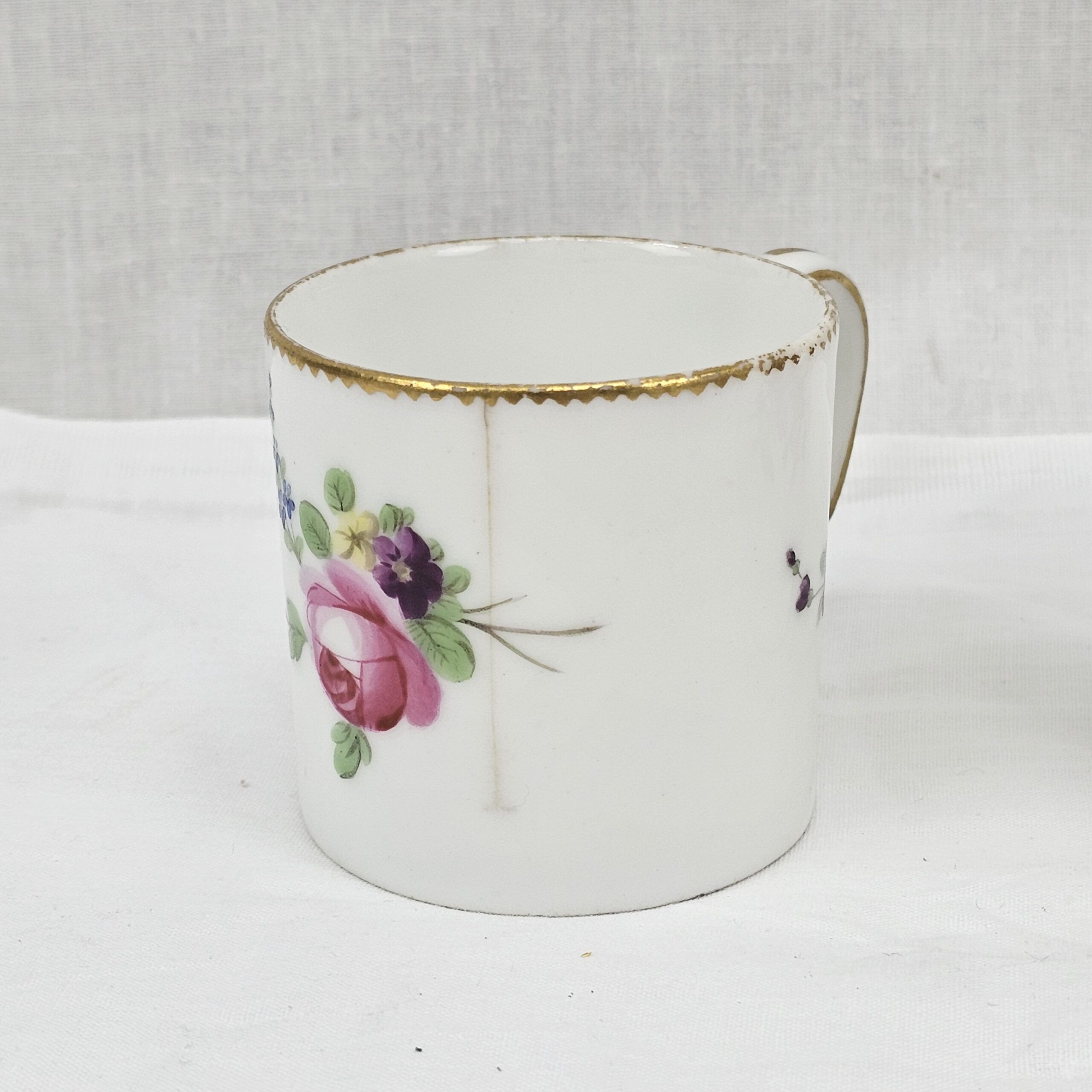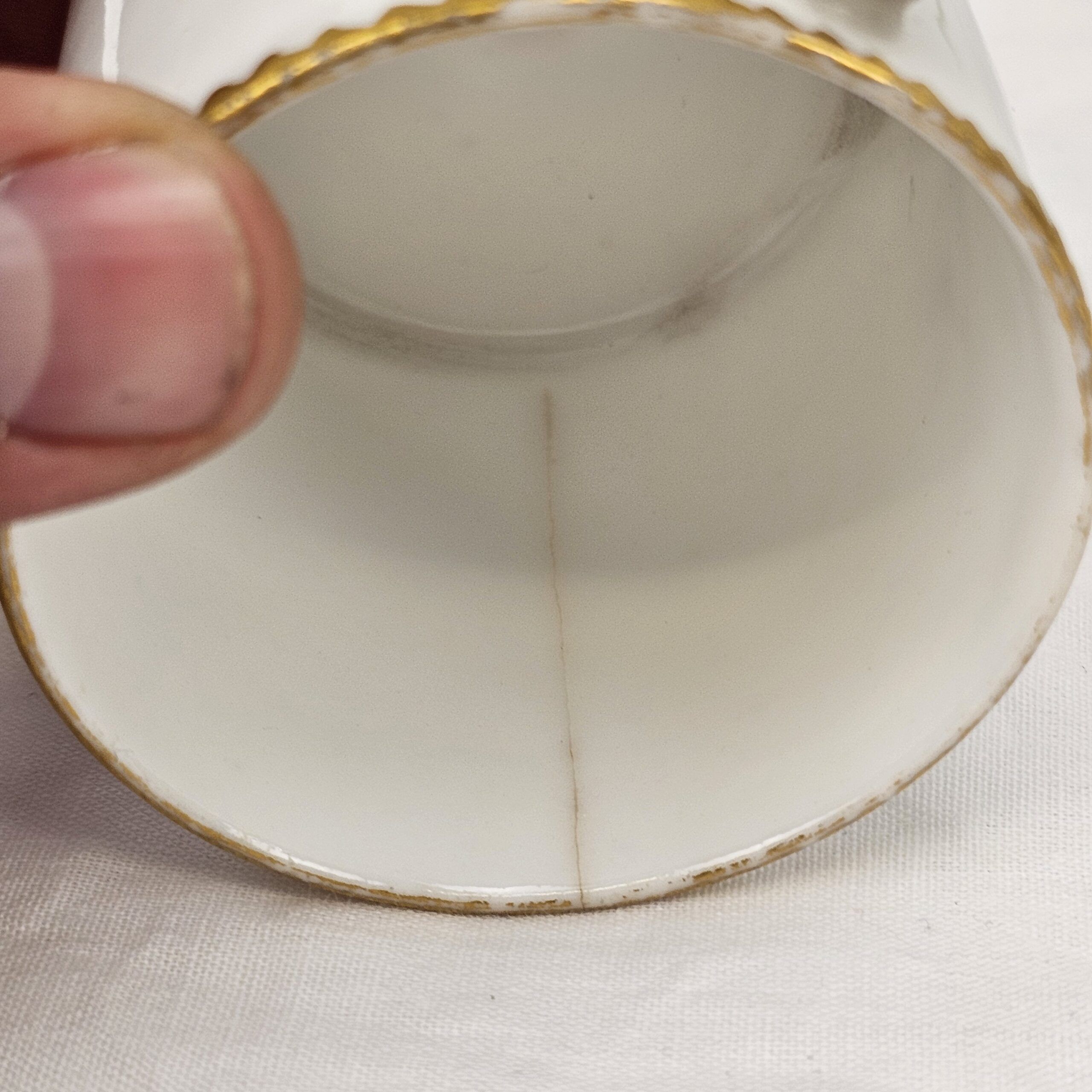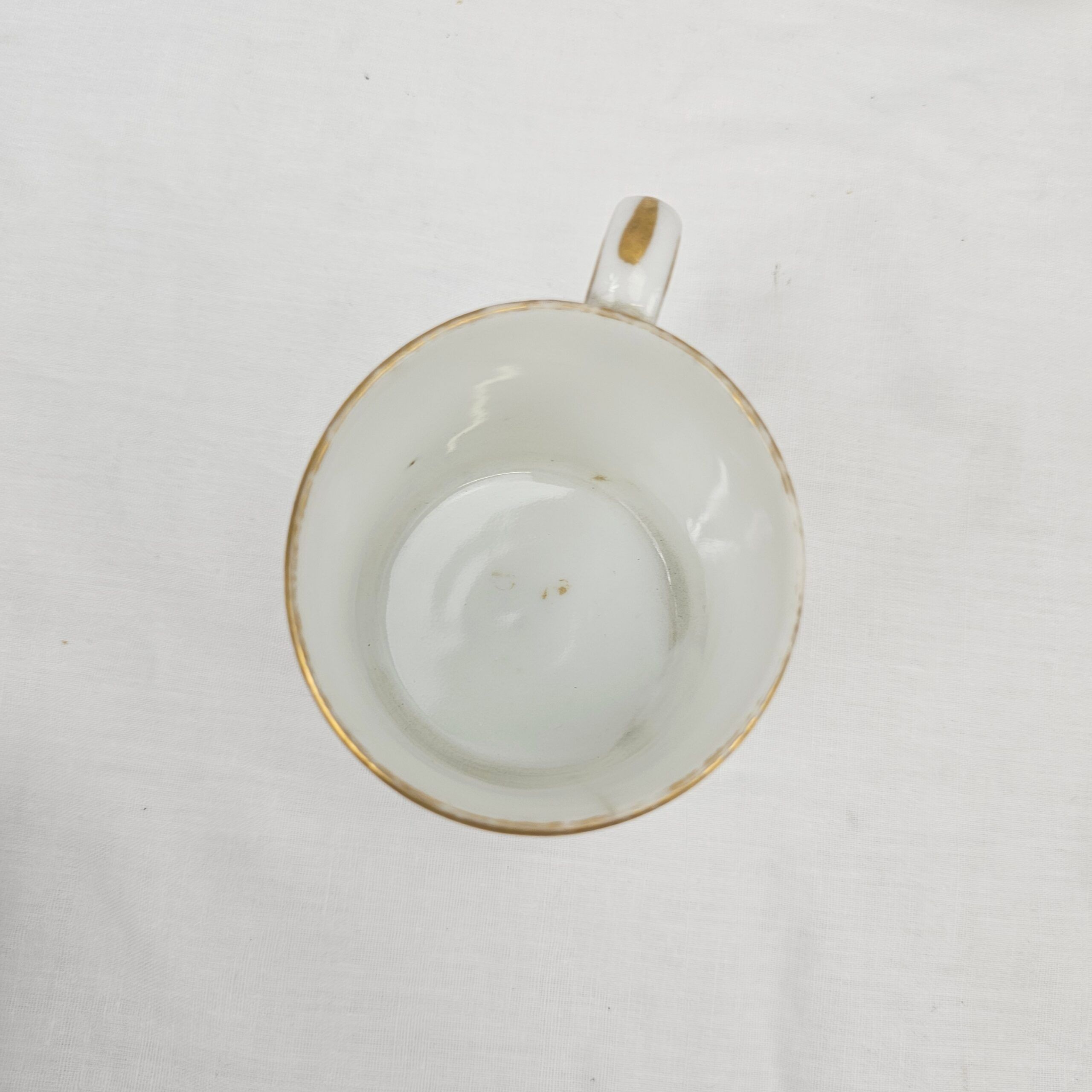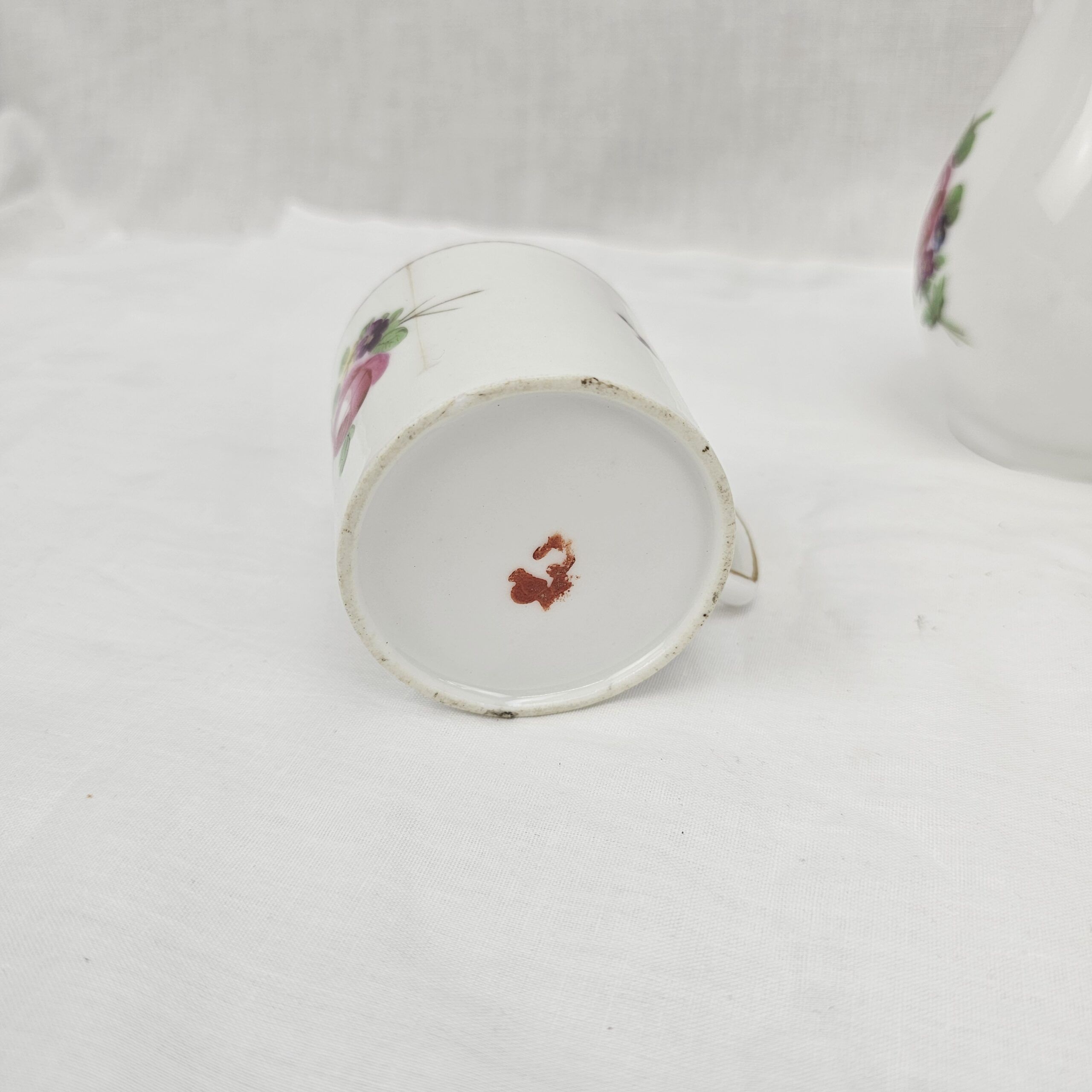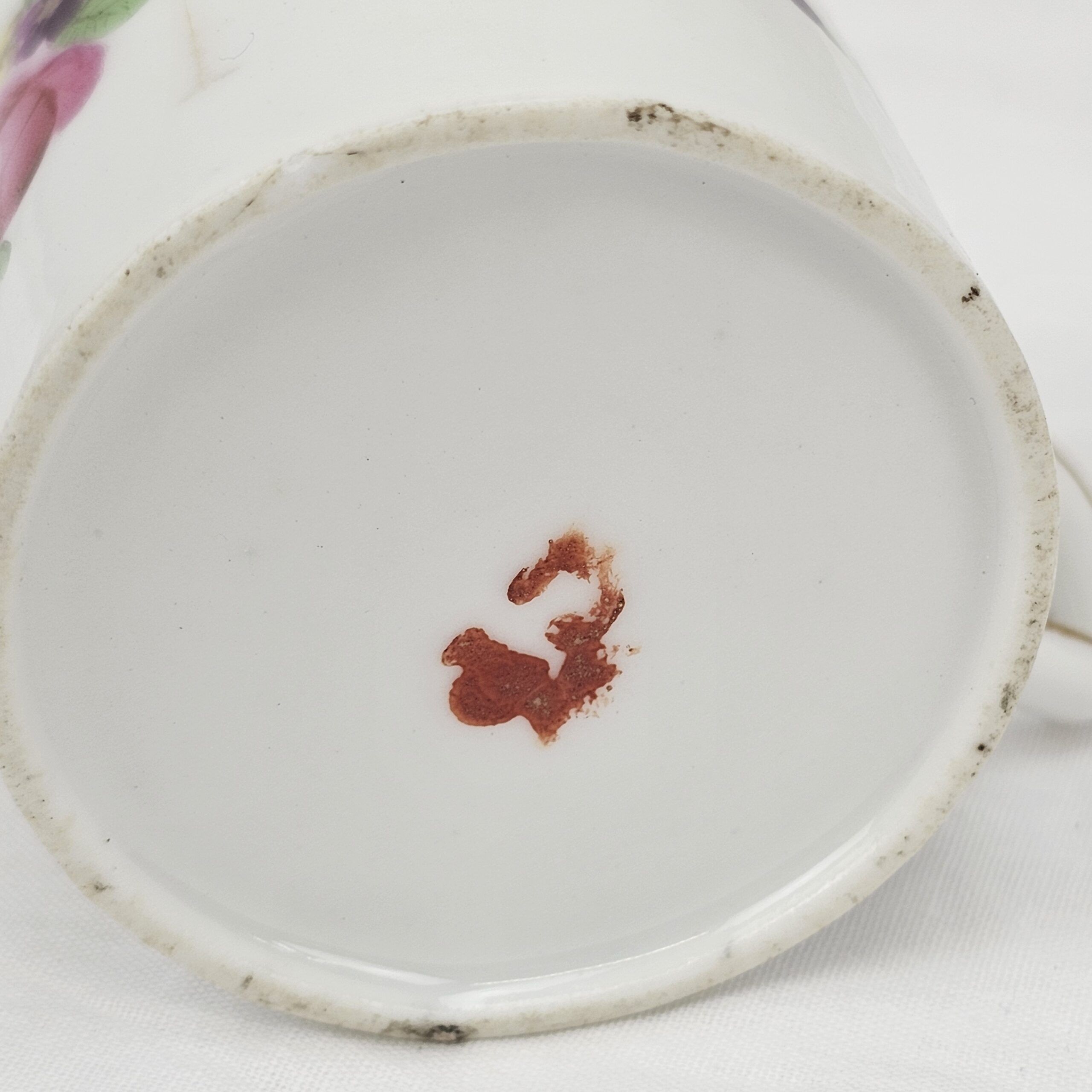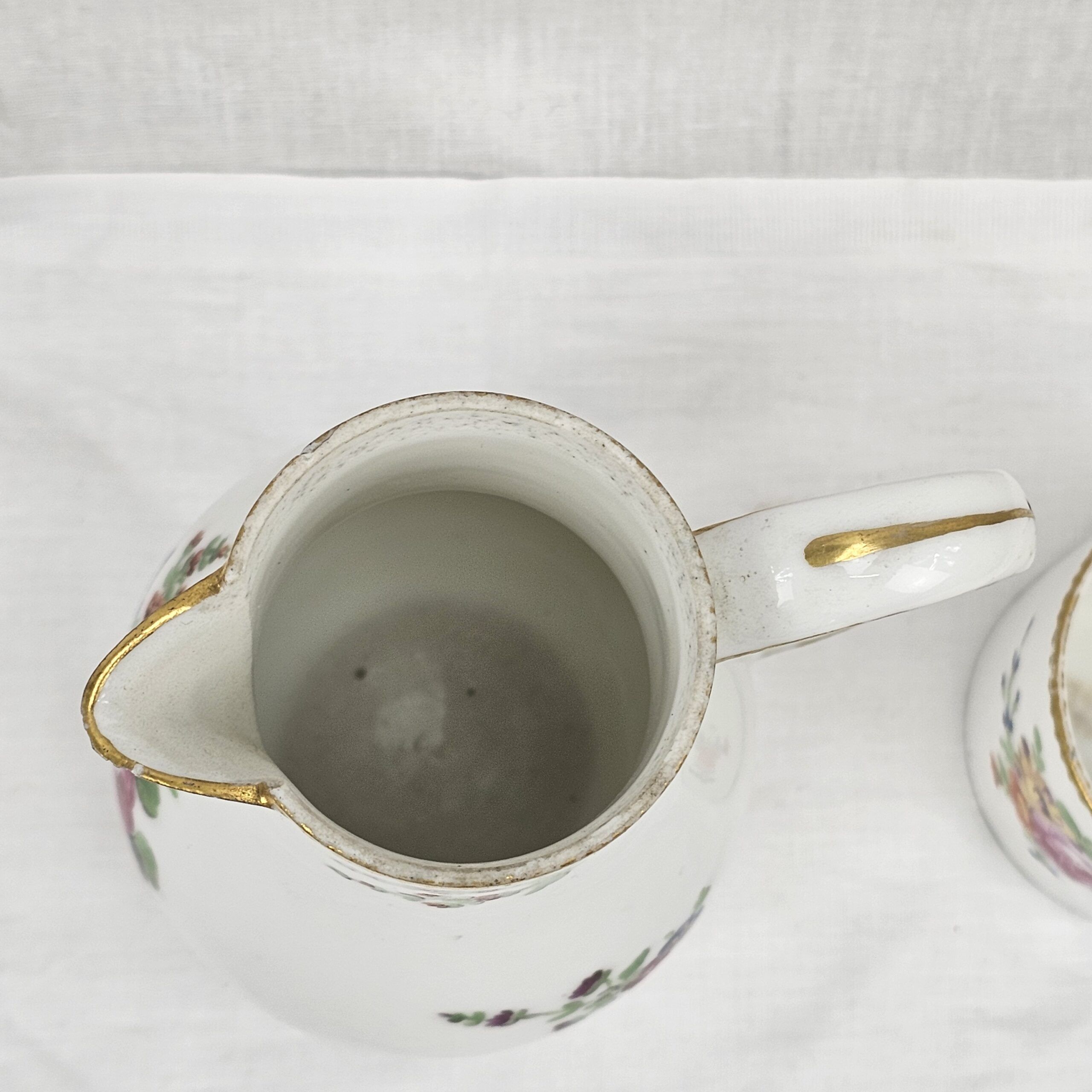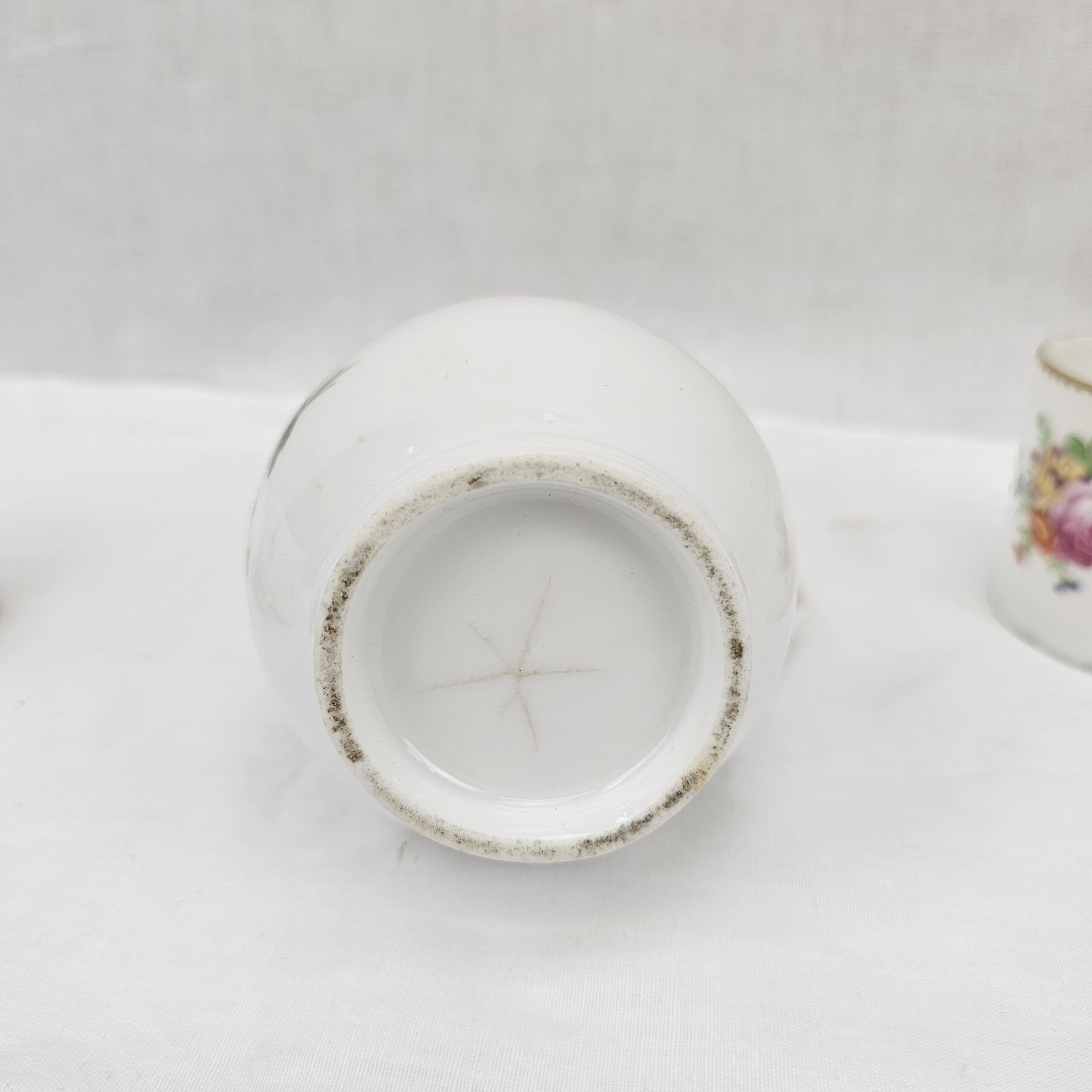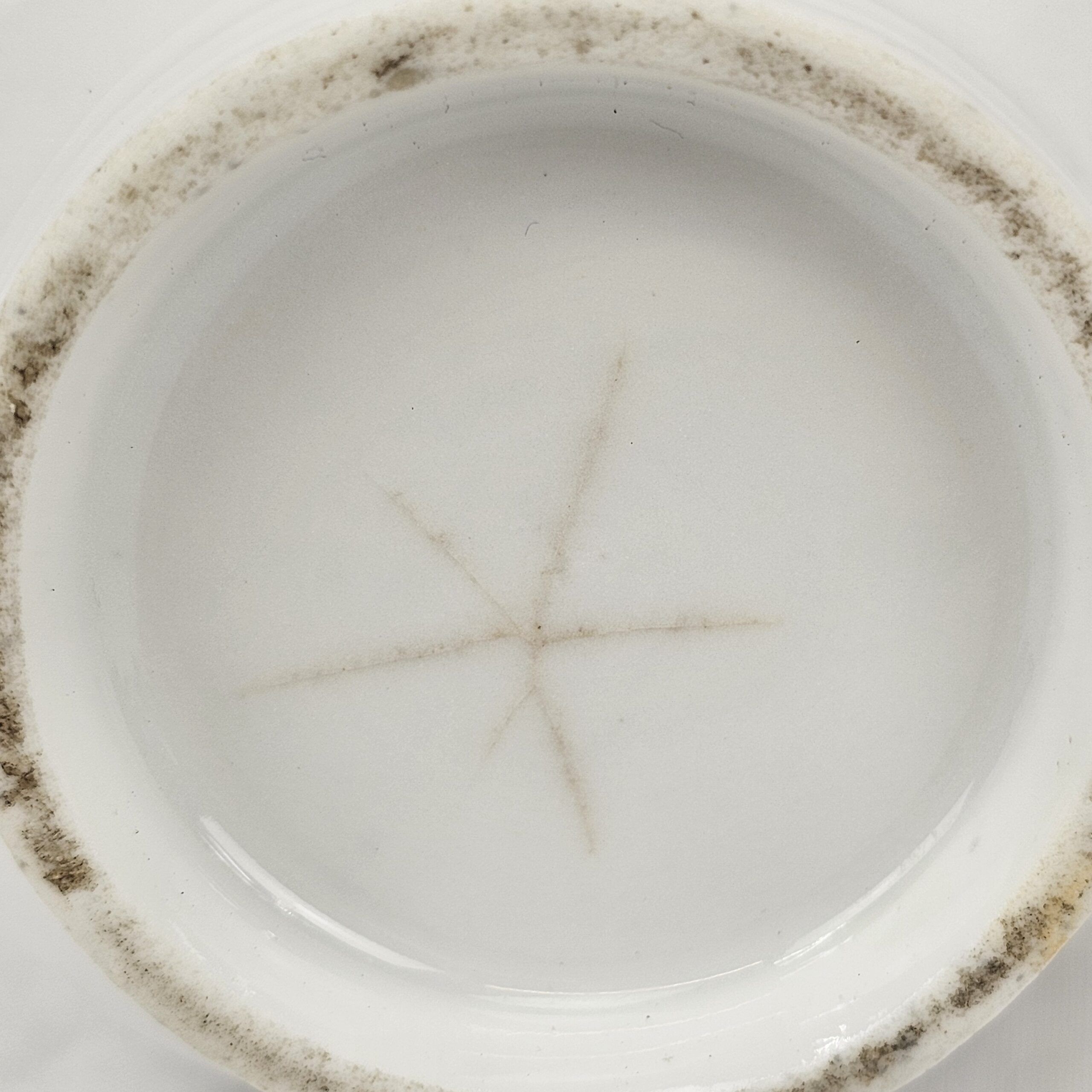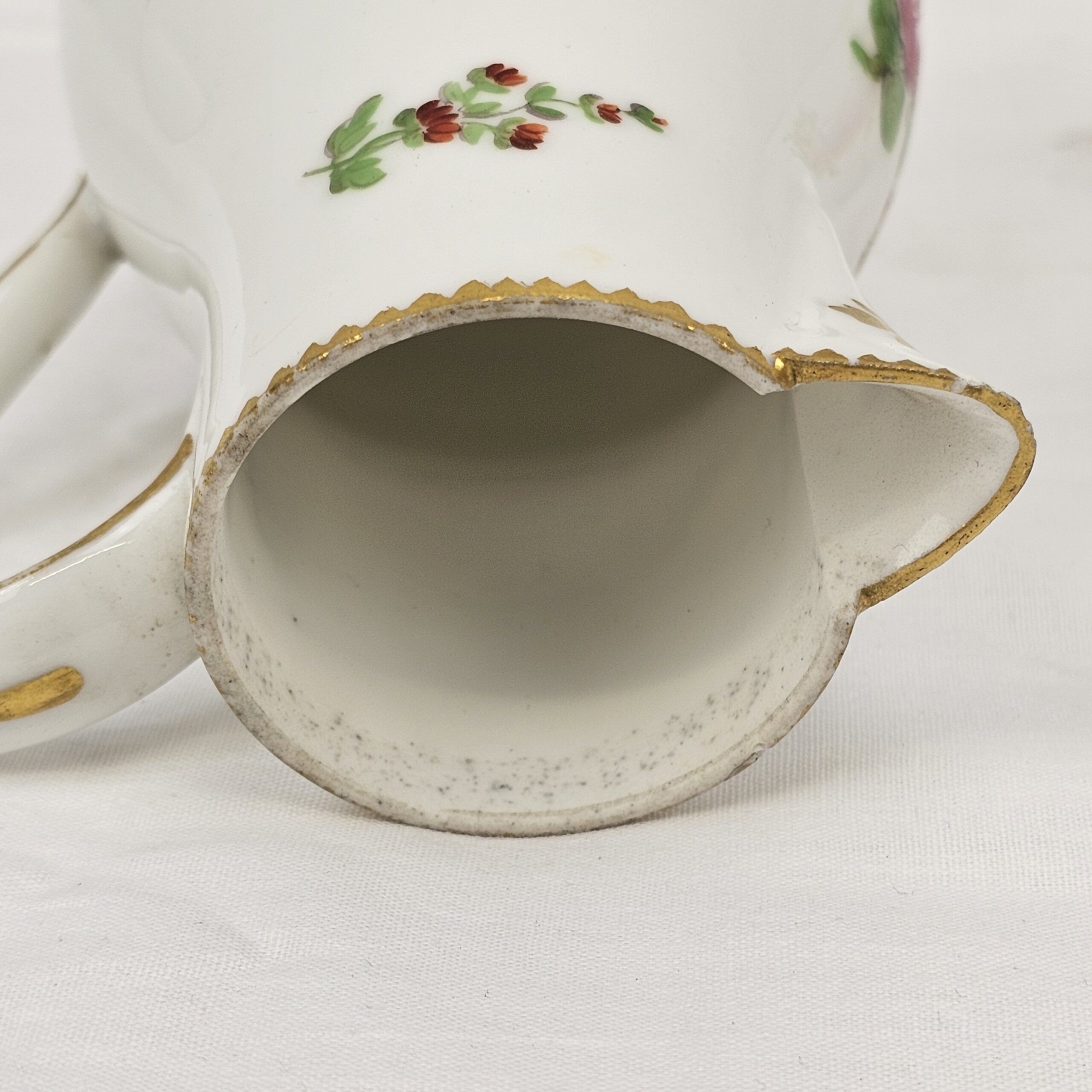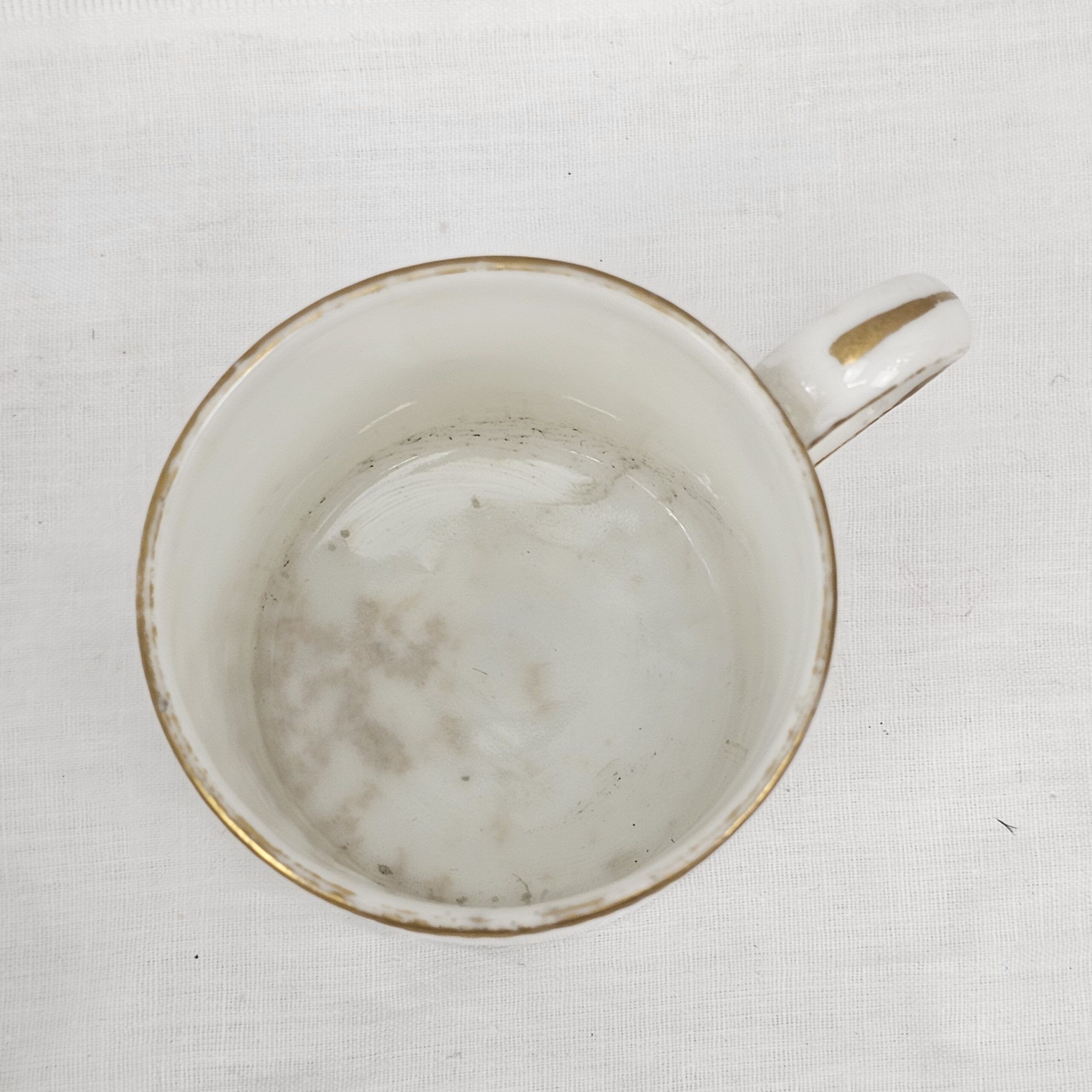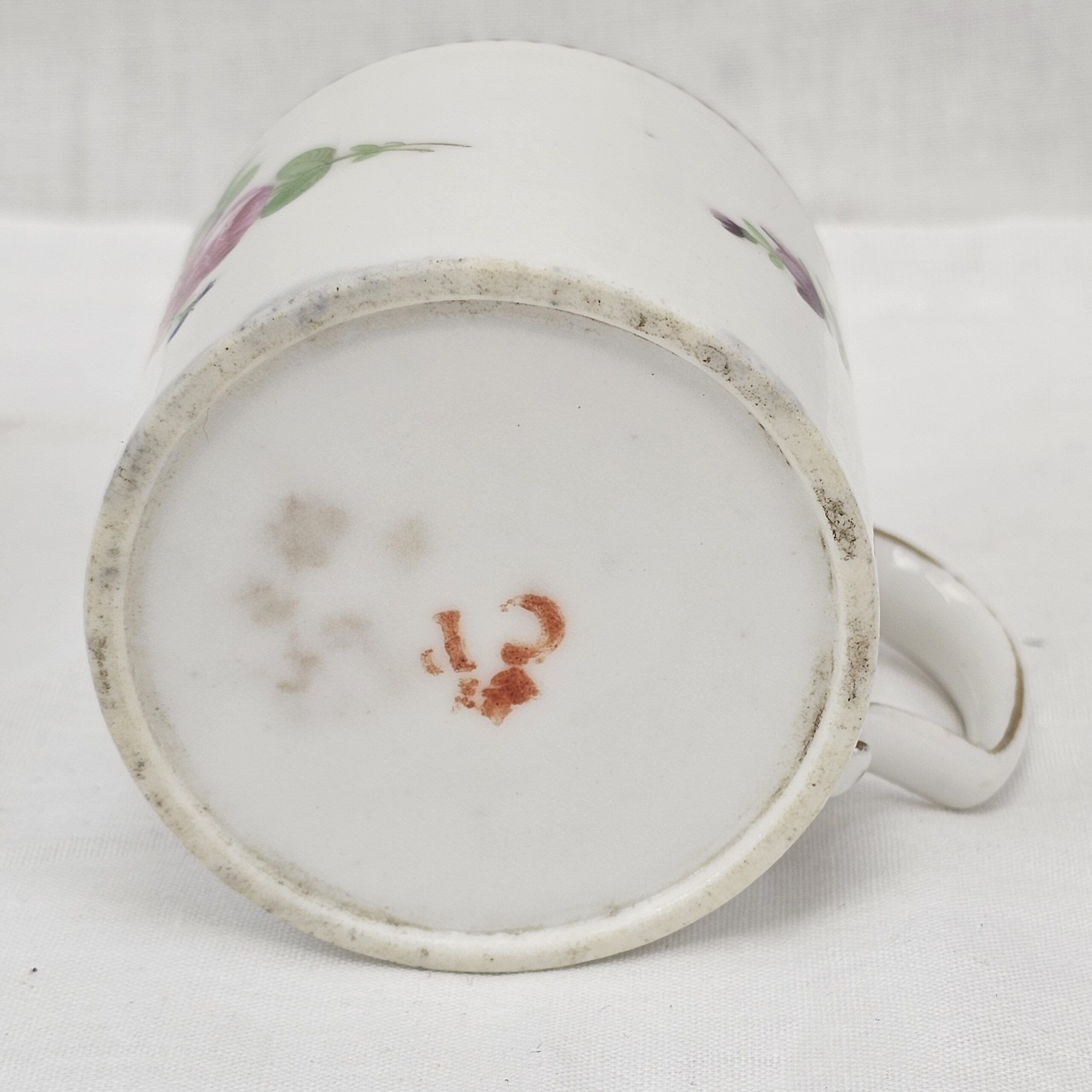~ Faubourg St. Denis Coffee Cans & Milk Jug ~
A beautiful 18th Century hand painted pair of coffee cans and matching milk jug by Faubourg St. Denis.
The set is decorated with wild flowers, each hand painted in the finest of detail. The decorations include wild roses, scarlet pimpernel, forget me not and buttercups. The rims and handles of each piece have been finished in gilt gold applied in a scalloped pattern. Each piece has a different combination of flowers but all have been painted with the same meticulous care and by the same hand.
The two coffee cans are stamped on the base with a crown and “CP”.
These initials stand for Charles Philippe the patron to the factory. Although the Jug is unmarked it is from the same set and has been painted by the same hand.
Faubourg St. Denis was the 1st Porcelain factory in France, it was started in 1769 by Pierre Hannong. Charles Philippe Comte d’Artois was the patron and protector of the factory. Charles Philippe was King Louis XVI’s youngest brother and the future King Charles X. The factory and ceased production in 1793.
~ Condition ~
The jug has a chip to the spout and a small crack to the rim. There is a chip to the base of the handle. The base has a star crack. The painting is in beautiful condition and the colours bright. The gilt gold is in good condition over the majority with areas of wear to the handle.
Both of the cups have cracks running down them. There is discolouration to the inside of one of the cups. The paining is in very good condition and the gilt gold intact over the majority. There are no chips to the cups.
~ Dimensions ~
The milk jug is 5.5 inches (14cm) high.
The coffee cups are 2.5 inches (6.5cm) high with a diameter of 2.5 inches (6.5cm).
The French Faubourg Saint-Denis coffee cans and milk jug, dating from 1769 to 1793, are significant examples of early French porcelain, which was among the first to be produced in Europe. These items were likely made by one of the pioneering porcelain manufacturers in Paris during this period, and they reflect the artistry and craftsmanship that emerged in France as it developed its own porcelain industry.
Historical Context:
Early French Porcelain:
The production of porcelain in France began in the early 18th century, following the success of Meissen in Germany. Before this, true porcelain was imported from China, and European potters could only produce faience or tin-glazed earthenware.
The discovery of kaolin in France in the 1760s, particularly in the Limoges region, allowed for the production of hard-paste porcelain, which was more durable and similar to Chinese porcelain than the previously made soft-paste porcelain.
By the mid-18th century, several important porcelain factories were established in France, including those in Vincennes (which later became Sèvres), Chantilly, and Paris, particularly in the Faubourg Saint-Denis area.
Faubourg Saint-Denis:
Faubourg Saint-Denis, located in Paris, became a hub for porcelain production. Workshops in this area were known for their high-quality porcelain, which often featured intricate decoration and was highly prized by the aristocracy.
The period between 1769 and 1793 was a time of great innovation in French porcelain, with manufacturers experimenting with both form and decoration to compete with other European porcelain producers and to meet the demands of an increasingly affluent and sophisticated clientele.
Description of the Items:
Coffee Cans:
The coffee cans from this period are small, cylindrical cups used for serving coffee, which had become a fashionable beverage in Europe by the 18th century.
These porcelain cans were often finely decorated with hand-painted motifs, including floral patterns, landscapes, or classical scenes. The decoration was usually executed in vibrant colors, with gilding applied to enhance the elegance of the pieces.
The porcelain itself would be white or slightly tinted, with a smooth, glossy finish typical of high-quality hard-paste porcelain.
Milk Jug:
The milk jug from this era would be a small, elegant vessel used to pour milk or cream into coffee. Like the coffee cans, it would be richly decorated, often with matching patterns and colors.
The jug might feature a curved handle and a spout, designed both for aesthetic appeal and practical use. The body of the jug could be rounded or slightly flattened, with the decoration carefully placed to enhance its shape.
Significance:
Artistic Achievement:
The Faubourg Saint-Denis porcelain items represent the height of French porcelain artistry during the late 18th century. The combination of skilled craftsmanship, innovative design, and luxurious decoration made these pieces highly sought after.
The use of hard-paste porcelain was a significant advancement, allowing French manufacturers to produce durable, high-quality items that could rival those from other European countries.
Cultural Importance:
These porcelain items were symbols of refinement and status, often found in the homes of the wealthy and the aristocracy. They were not just functional items but also decorative objects that reflected the tastes and fashions of the time.
The production of such fine porcelain was also a matter of national pride, as France sought to establish itself as a leader in the luxury goods market.
Historical Context:
The period from 1769 to 1793 covers the years leading up to and including the early stages of the French Revolution. Porcelain production continued during these turbulent times, although the market for luxury goods began to decline as the Revolution progressed.
The Faubourg Saint-Denis coffee cans and milk jug from 1769 to 1793 are important examples of early French porcelain, reflecting the technical and artistic advancements of the time. These items not only served practical purposes but also stood as symbols of elegance and cultural sophistication in pre-Revolutionary France.


